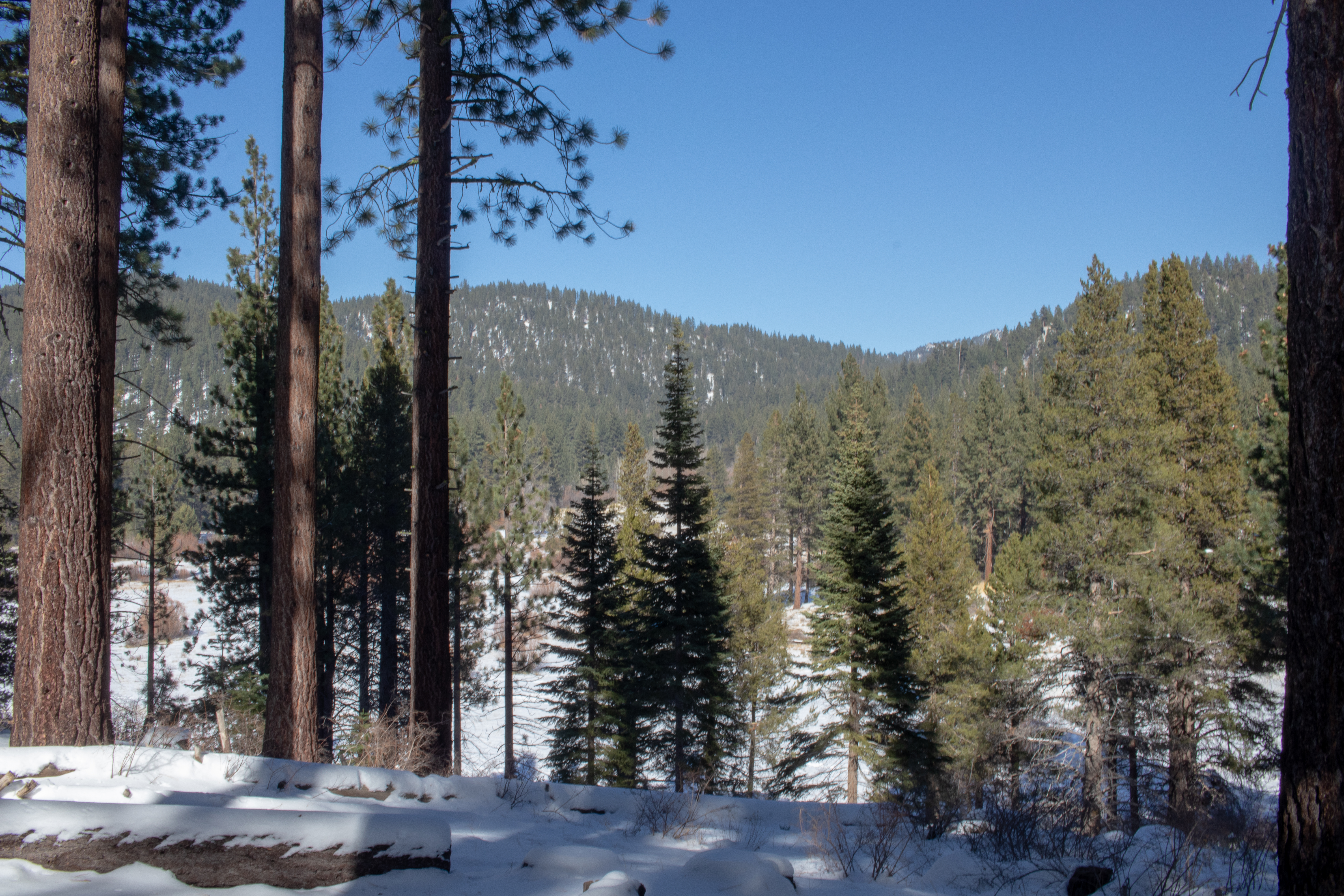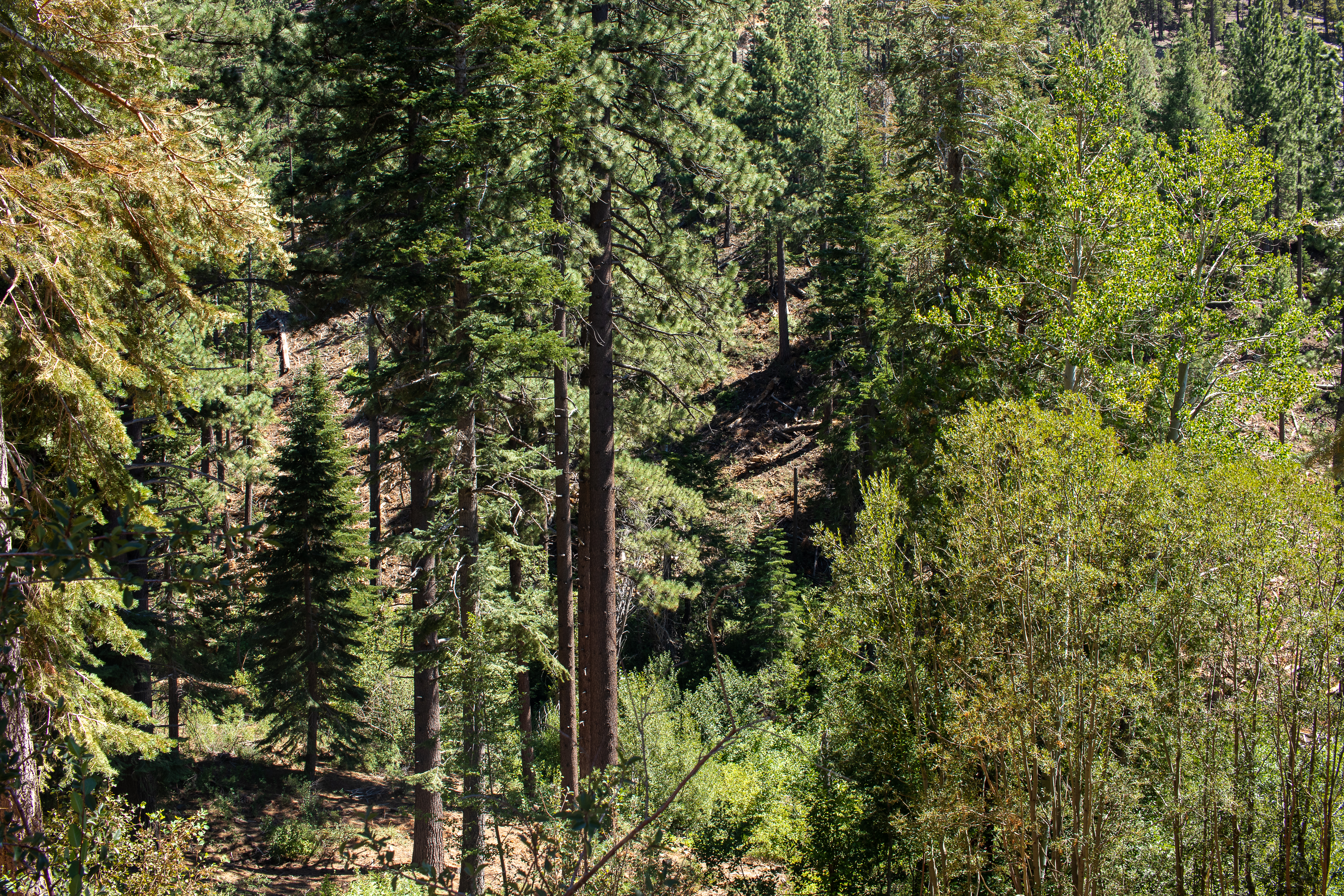Prescribed Fire
A prescribed fire is the carefully planned and controlled application of fire to an area. Its purpose is to accomplish land management goals, including fuels reduction and habitat restoration. Prescribed fires are also known as controlled burns or prescribed burns, but they should not be confused with open burning that can occur under permit issued by your local fire protection district. The implementation of prescribed fires in Nevada is governed by NRS 527.122-128.
Piles Pre-Burn, at Lake Tahoe Nevada State Park
There are compelling reasons for the use of prescribed fires as a land management tool:
- Prescribed fires can lower the threat of catastrophic wildfires in the same area, by reducing the flammable fuels.
- Prescribed fires improve habitat for wildlife species, by removing invasive plants and noxious weeds.
- Prescribed fires can encourage new growth of native plant species, by recycling nutrients into soils and by removing dead and down vegetation, exposing young plants to water and sunlight.
- Prescribed fires contain the spread of pests and diseases that threaten forest health.
- Prescribed fires replicate the natural conditions that allow fire-adapted plant species to reproduce and thrive.
- Landscapes like pine forests, grasslands, and meadows benefit from fires.
Piles actively burning, at Lake Tahoe Nevada State Park
Prescribed Fire Requirements When Implemented by the State of Nevada:
- A prescribed fire must be conducted pursuant to a written plan, prepared by a qualified person (an RXB3 for low, RXB2 for moderate and RXB1 for high complexity when implemented by the State). and agency policy.
- Every prescribed fire plan must receive a technical review, outside of NDF. Technical reviews must be conducted by a qualified burn boss, that is qualified to oversee a burn of the same complexity.
- All prescribed fire plans must be approved and authorized by State Fire Management Officer and the State Forester/Firewarden, prior to implementation.
- Approved prescribed fires are conducted under direct supervision of a burn boss, who is qualified to oversee such fires and who remains on site for the duration of the fire.
- On the day of the prescribed fire, the burn boss is responsible for briefing the staff, notifying impact parties, inspecting the project area to validate fire plan elements (e.g., location, areas of special concern), obtaining current weather and smoke management forecasts, updates, and special advisories, and confirming that the pre-fire conditions are met. The burn boss is also responsible for completing the Go/No Go Checklist and ensuring availability of contingency resources. On-going monitoring, patrol, mop up, and reporting are also their responsibility.
After pile burning - Late Tahoe Nevada State Park
Written Plan
Written plans are required and must be approved before a prescribed fire can be performed. The plans provide detailed descriptions of the fire area, objectives, implementation procedures, pre-burn considerations, staffing, communication, contingency plans, and safety procedures. The current written plan template is availble through this link.



